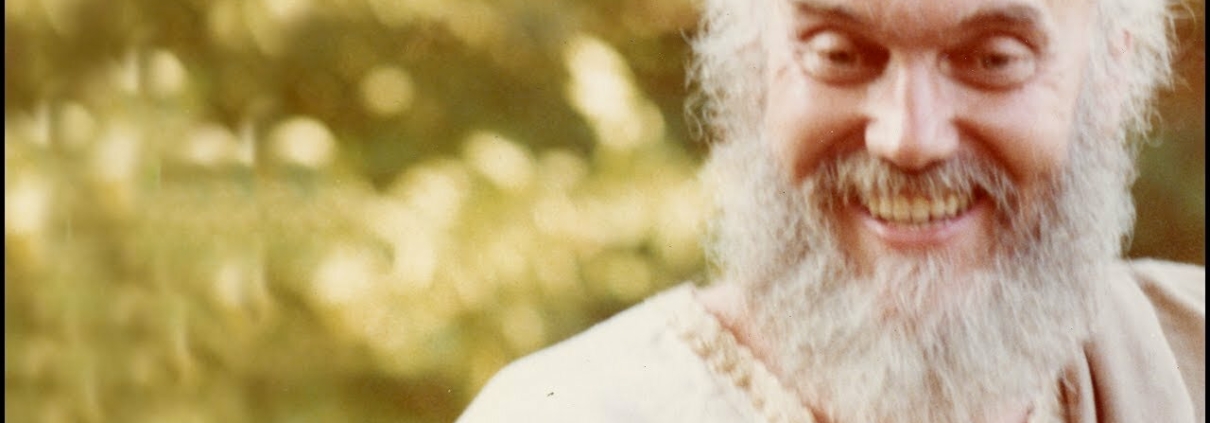Chop Suey or Jewy?
Chinese food fascinated the first and second-generation Jews coming to America in the 20th century. Chop suey was so exotic that it defied being overtly “trayf.” Moreover, Chinese food appealed because it was generally an inexpensive alternative to other cuisines, especially for frugal Jews unaccustomed to eating out. As many American Jews moved away from strict observance (like kashrut), they also sought greater meaning and relevance from religious traditions. The challenge for Judaism was that our liberal and open society offered seekers a sampling of many religions, with the exotic Asian religions seeming most delectable.
Buddhism, like Chinese food, fascinated many American Jews beginning in the 1960s. The term JuBu was a popularized designation for this cohort. For example, Richard Albert, son of a founder of Brandeis University, later became known as Baba Ram Das who died in 2019. Sometimes donning simple robes, Ram Das was a Buddhist teacher and author of the best selling “Be Here Now.” He was revered as a sort of high priest of American Buddhists, along with other well-known Jewish born Buddhists such as Sylvia Boorstin, Alan Ginsberg, and Jack Kornfield.

Ram Das
What was attractive about Buddhism to American Jews? One appealing tenet of Buddhism is the “middle way.” The spiritual path to attain your best self is through moderation and tolerance. The middle way is a practical approach to life, avoiding extremes as a path to contentment. And like egg foo young, Buddhism is exotic enough to avoid the shtetl born “feh” factor that was associated with Christianity. Moreover, Buddhist teachings are an economical approach to spirituality – far less taxing than Talmud study in a yeshiva, 613 mitzvot to observe, and intolerably long prayer services.
Judaism, by contrast to the middle way, focuses upon the existential extremes. Life is to be cherished. Death is unwelcome. If one is observant of mitzvot the rewards are bounteous and life is given. If one is a rasha, evil person, then punishment (if not death) awaits. No middle way is offered. No econo-fare Judaism is at hand.

Imagining the pomegranate and bell design
There is a beautiful insight into Judaisms’ fundamentalist approach in Torah portion Tezaveh, as the adornment of the High Priest is described. The Priest wears a long robe with bells and pomegranates attached to the hem, one bell, one pomegranate, and so on. The pomegranates are a symbol of life and fertility. The fruit is filled with seeds! The bell, on the other hand, tolls death. It serves either as a warning of death or commemoration for one who died.
The ringing of bells was used to alert God, lest the High Priest comes into the presence of the King abruptly or without permission. The penalty for incorrectly coming before God was death, even as the High Priest entered the Holy of Holies on Yom Kippur to atone and pray for the lives of the Israelite people. In this way, life and death were the chief decorative elements of the High Priest’s garment; an appropriate reminder of and poignant metaphor for Jewish theology.
Once Jews left the constraints of kosher cooking for moo goo gai pan, the next step on the road to foodie-ism was soon to follow. American Jews gained in economic wherewithal and many shifted from life and death worries related to observance over to personal satisfaction and the comforts of consumerism. Some veered from a religious construct of pomegranates and golden bells to acai berry smoothies and Gucci buckles.
Nonetheless, the pomegranates and bells approach continues to sustain a more modern Jewish identity, that of advocacy. Jews are highly involved in the life and death issues of climate change, immigration, gun control, and human rights. Symbols of life and death are emblazoned on the hems of our Jewish soul. They are as beacons of light, markers of devotion, and symbols of godliness.
The sidestep to Buddhism by some Jews was a wake-up call for us all. The search for meaning can take us to other religious traditions or allow us to refocus on what is meaningful in Judaism. Our ancient religion remains relevant precisely because of its focus on the extreme contrasts of life and death. Judaism compels us to address the existential issues of our time. Jews are active in politics and advocacy as an expression of Judaism. Whether or not those Jews are now eating pork Hunan, the essence of their Jewish identity comes from the life-affirming ideals of Judaism.
I’m not settling on Judaism lacking in observance but rather I’m celebrating a Judaism inspiring godliness. In a world of choices and middle ways, I pick the religion that compels me to protect and preserve all life.
R’ Evan J. Krame






 Evan J. Krame was ordained as a rabbi by the
Evan J. Krame was ordained as a rabbi by the